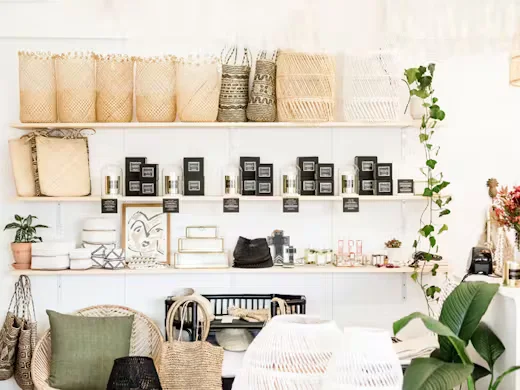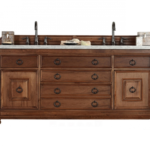Homeware Zone is emerging as a notable brand (or storefront) in the homewares and household goods niche. While information is somewhat limited, Homeware Zone’s presence can be traced through their social media footprint and preliminary online shop setup.
They appear to deal in kitchen appliances, home furnishings, decor items, and general household accessories. On their Facebook page, they advertise products like kitchen hoods, gas stoves, induction cookers, and related items.
The main website suggests they are preparing to launch, with a Shopify-powered store under development.
Though still in a growth phase, Homeware Zone offers a promising look at how a modern homeware brand might operate — combining online channels, social media marketing, and a curated product lineup.
Product Range and Categories
One strength of a successful homeware retailer is diversity of product categories. Based on Homeware Zone’s marketing, here are likely or confirmed product lines:
- Kitchen Appliances & Cooking Gear: includes gas stoves, induction cookers, kitchen hoods etc.
- Home Décor Items: decorative accessories, small furnishings, accent pieces. (As is common for homeware retailers generally)
- Household Essentials: things like cleaning tools, organization and storage, utility items.
- Small Electricals & Gadgets: given their listing as an “electronics store” on Facebook, they likely sell small appliances.
A well-balanced mix between essentials (high turnover) and luxury/decorative items (higher margin) helps a homeware brand stay both relevant and profitable.
Business Model & Sales Channels
For a modern homeware retailer like Homeware Zone, typical sales and operational approaches may include:
- Online Storefront (eCommerce): Their Shopify setup indicates they will sell directly via an online shop.
- Social Media Marketing & Channels: They actively use Facebook and video content to showcase products.
- Direct Ordering via Messaging / Local Markets: In regions with less developed eCommerce penetration, many retailers accept orders via WhatsApp / Facebook messaging and deliver locally.
- Delivery / Logistics Network: Critical for success — fulfilling orders across regions, handling returns, and ensuring safe transport of fragile home goods.
- Showroom / Physical Presence (possible future expansion): Once brand scales, having a physical display center or store helps customers build trust by seeing and touching items.
A hybrid model (online + local deliveries + possible showroom) often suits homeware businesses well, enabling reach without overextending with brick-and-mortar overheads.
Key Success Factors and Challenges
To rank high, Homeware Zone (or any similar homeware brand) must navigate both opportunities and obstacles. Here are the main factors:
Success Factors
- Product Quality & Consistency — durable, well-finished goods build trust and reduce returns.
- Curated Style & Differentiation — selecting on trend, cohesive product lines that speak to a design aesthetic.
- Strong Content & Branding — attractive images, well written descriptions, social media engagement.
- Efficient Logistics — timely delivery, well-packaged items, transparent tracking.
- Customer Service & After Sales — easy returns, warranty, support for faulty goods.
- Pricing & Value — competitive pricing while maintaining margin.
Challenges
- Competition & Saturation: The homeware space is crowded. Standing out is difficult.
- Logistics & Breakages: Many homewares are fragile; shipping them safely is costly.
- Inventory Management: Balancing too much stock (tying up capital) vs. stockouts.
- Trend Volatility: Design tastes shift; what’s “in” can quickly become outdated.
- Regional Market Constraints: In some markets, eCommerce trust, payment systems, or delivery infrastructure can be weak.
To thrive, Homeware Zone must find ways to mitigate these challenges, such as using reliable packaging, selective inventory, robust return policies, and building brand differentiation.
SEO, Content & Digital Marketing Strategies
To rank high on Google and attract organic traffic, a homeware brand must deploy solid SEO and content marketing strategies. Here are actionable suggestions:
Keyword Research & Optimization
Focus on keywords like “homeware online store”, “kitchen appliances delivery”, “modern home décor”, etc.
Use these in product pages, category pages, meta tags, alt texts, and blog content.
High-Quality Content & Blogging
Write blog posts about home décor trends, how to choose kitchen appliances, styling tips, maintenance guides.
These become entry points for organic visitors and help with internal linking.
Visual Content & Social Media
Use high-resolution images, videos, reels, unboxings, before/after scenes.
Share on Instagram, Facebook, Pinterest — home décor is very visual by nature.
User Reviews & UGC (User-Generated Content)
Encourage customers to leave photos and reviews.
Show these on product pages; they boost trust and SEO (fresh content).
Technical SEO & Site Performance
Fast page load times, mobile responsive design, proper schema markup (product, review, FAQ).
Good site structure with breadcrumb navigation, clean URLs, canonical tags, etc.
Backlinks & Partnerships
Collaborate with interior design bloggers, home décor magazines, influencer reviews.
Guest posts, product features, and partnerships help build authority.
Local SEO (if applicable)
If Homeware Zone delivers locally, listing on Google My Business / local directories, city + “homeware zone” keywords helps capture local search traffic.
By combining product pages, content, visuals, reviews, and solid technical foundations, Homeware Zone can build a strong SEO presence over time.
Growth & Expansion Opportunities
For Homeware Zone to scale and become a top player, here are strategic expansion levers:
- Geographic Expansion — begin local, then expand to nearby cities or regions; eventually cross-border delivery if feasible.
- Segment Extensions — branch into related spaces (e.g. outdoor furniture, garden décor, lighting, bathware).
- Private Label / In-house Brands — develop exclusive lines to improve margin and brand identity.
- Bundle & Upsell Strategies — product kits (e.g. kitchen starter kits), cross-selling complementary items.
- Subscription / Replenishment Models — e.g. consumables like kitchen tools, cleaning supplies, monthly decor items.
- Pop-up stores & Exhibitions — showcase signature collections in brief physical setups or fairs to gain exposure.
- Sustainability & Eco Offering — environmentally friendly materials, zero-waste packaging, recycled goods can attract differentiation in a crowded field.
If Homeware Zone pursues smart growth along these dimensions, they can transition from a nascent player to a recognized homeware brand.








